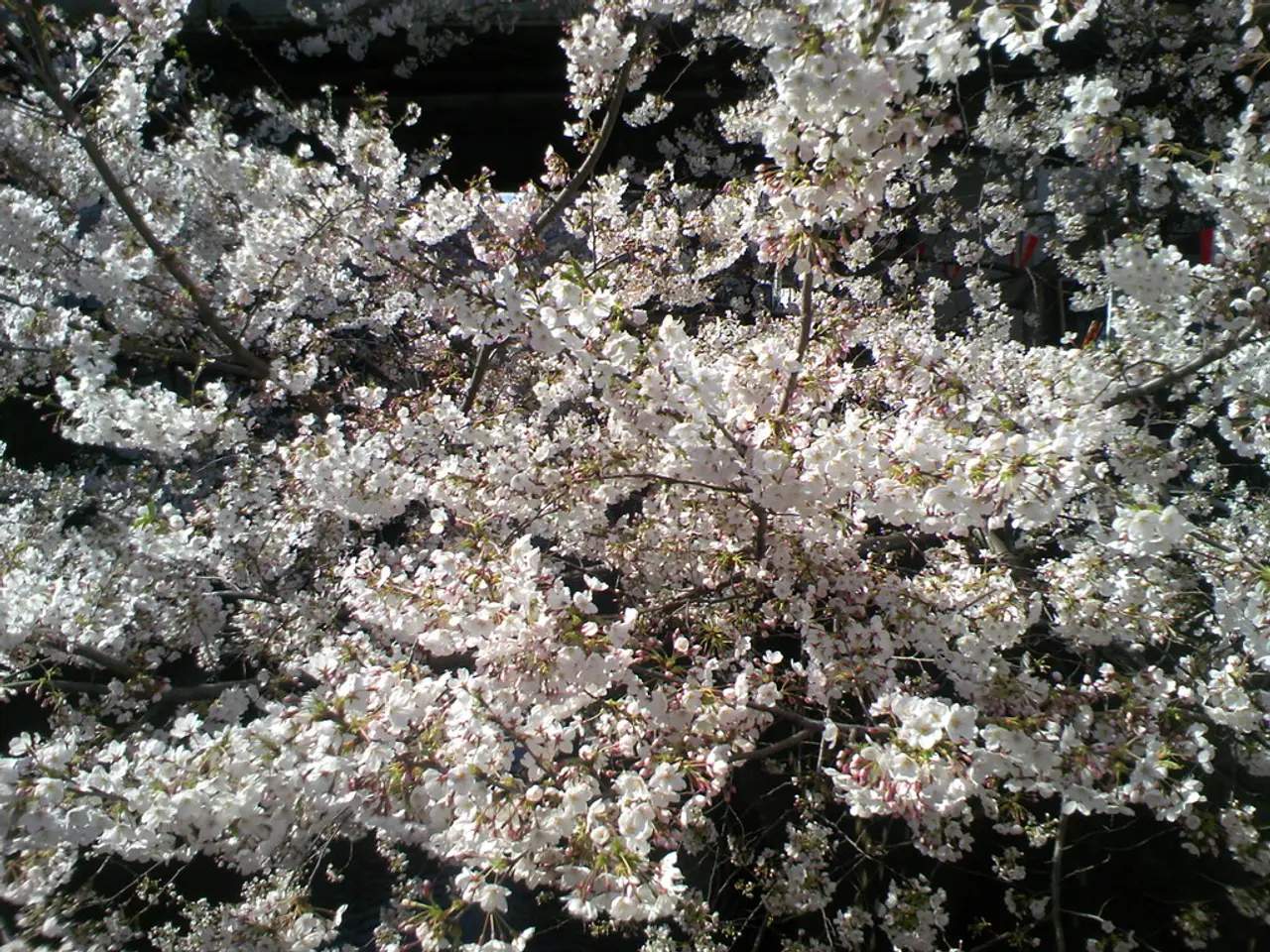Pruning a Mulberry Tree: Specialized Methods for Vigorous Regeneration
Mulberry trees are a popular choice for gardens and parks, known for their lush foliage and abundant fruit. To ensure the health and productivity of these trees, proper pruning is essential. Here's a step-by-step guide to pruning your mulberry tree effectively.
**Optimal Timing**
The best times to prune a mulberry tree are late winter, while the tree is dormant, or immediately after the harvest. Pruning in late winter helps avoid stress and allows wounds to heal before new growth starts. Pruning right after harvest is good for maintaining manageable size, especially for fruitless mulberries.
**Tools Needed**
To prune a mulberry tree, you'll need sharp pruning shears for small branches, loppers for medium branches, a pruning saw for larger limbs, gloves, and protective eyewear.
**Step-by-Step Pruning Process**
1. Remove Dead, Damaged, or Diseased Branches: Cut these branches at their origin to improve tree health and airflow. 2. Thin Out Crowded or Crossing Branches: Identify branches that crowd the canopy or cross each other and remove them to open up the canopy. 3. Cut Back Excessive Growth: Use heading cuts to shorten long branches, cutting back to a lateral branch or bud. 4. Control Tree Size: For fruitless mulberries or to keep the tree manageable (2-3 meters tall), prune hard right after harvest annually. For fruiting trees, annual pruning in late winter keeps size manageable and improves fruit production. 5. Maintain a Balanced Structure: Ensure remaining branches are well spaced to support healthy growth and maximize fruiting potential. 6. Clean Up: Remove cut branches from around the tree base to prevent pests and disease.
**Additional Tips**
- Mulberries tolerate pruning well and respond with vigorous new growth if pruned correctly. - Avoid heavy pruning during active growth periods to prevent stress. - Use clean, sharp tools to make clean cuts that heal quickly. - Pruning a mulberry tree when it's dormant helps it heal faster. - Protecting your hands is important when dealing with sharp tools and thorny branches; use a good pair of gloves.
By following these best practices—pruning in late winter or right after harvest with proper tools and following thinning and heading techniques—you can keep your mulberry tree healthy, productive, and well-shaped.
Larry Meyers, with over 10 years of lawn and landscaping experience, aims to share gardening knowledge and create a one-stop shop for gardening information. For very tall mulberry trees, pollarding might be needed to control size and encourage new growth lower down. It's also essential to clean your tools with isopropyl alcohol or a household disinfectant like Lysol to prevent the spread of diseases. Happy pruning!
In addition to maintaining the health and productivity of your mulberry tree, you can enhance its appearance by focusing on home-and-garden tasks such as gardening. Pruning your mulberry tree during optimal times like late winter or right after harvest will facilitate quick healing and preserve the tree's lush foliage, contributing to a pleasant lifestyle and attractive home-and-garden environment.








